United kingdom (uk) Famous Food, 25 Traditional Food In United kingdom (uk) To Try, What To Eat In United kingdom (uk)? Top 10 United kingdom (uk) Foods,
If British food has come in for a bit of mockery over the years, it isn’t because the recipes are wrong. It’s because they’re misunderstood.
We call sausages “toads.” We cover offal in gravy, wrap it in pastry and call it a “pudding.” We eat eels! Real, no foolin’ eels!
None of it really makes sense to the casual observer. But that’s just one of the things that makes British cuisine so special, whether it be from any of the four corners of the UK: England, Scotland, Wales or Northern Ireland.
Eating British food is not just eating. It is a surrealist expedition into a magical parallel universe that will challenge almost everything your eyes, your palate and your gut know to be right and proper.
1. Fish and Chips
Considered to be the national dish of the UK – and still the most popular takeaway in all four of its nations – fish and chips is something of a British institution! So it would be unthinkable to start the list of the best British food with anything other than our world-famous fish & chips…
The perfect comfort dish on a cold day, a typical fish and chip dinner will consist of a large piece of white fish (usually cod or haddock) coated in batter and deep-fried to crispy perfection. Traditionally, in the UK, the fish is served with chunky chips, never with fries.
This is typically smothered liberally with salt and vinegar, then wrapped in paper and served to take away. Wrapping the meal has the effect of slightly steaming the chips, giving them a softness that Brits love! Traditionally, the paper would have actually been a newspaper, but you don’t see this often anymore. In honor of this tradition, some places have special wrapping paper that looks like a newspaper.
Side dishes to complete the meal of fish and chips include unique delicacies such as pickled eggs, pickled onions, or – most popular of all – mushy peas (which are precisely as they sound).
Origin: Both Lancashire and London claim to have invented fish and chips, although the exact origin is unclear. However, Charles Dickens referred to a ‘fried fish warehouse’ in Oliver Twist. And London did, indeed, have the first fish and chips shop, which opened in 1860.
Where to try it: You will find fish and chips served everywhere in the UK, from street-food stalls to upscale restaurants. But for a true, authentic experience, buy them from a proper fish and chip shop (locally known as a ‘chippy’) and eat them directly from their paper wrapping.
TIP: If you are visiting London and want to try some typical British food (including some of the best fish & chips in town), check out this popular traditional food tour!
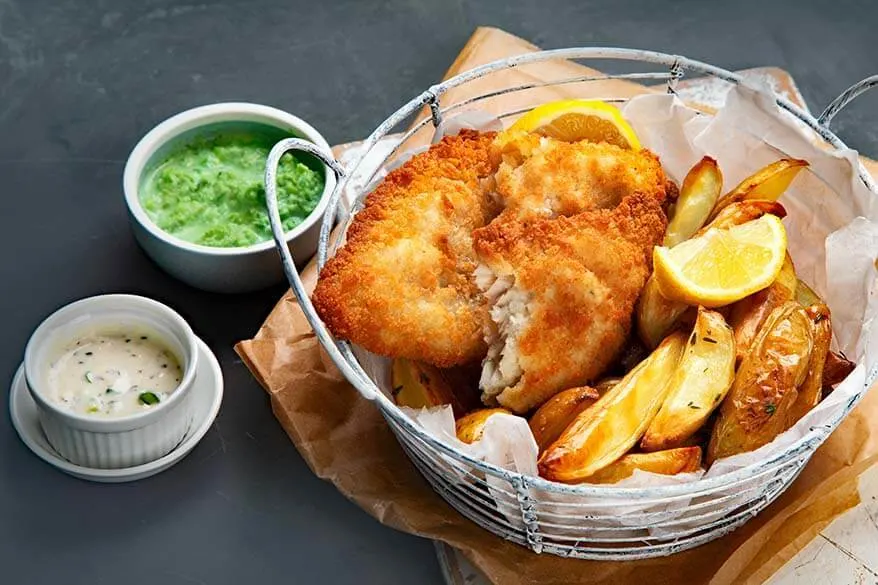
2. Shepherd’s Pie
When is a pie not really a pie? Perhaps when it’s Shepherd’s Pie, one of the UK’s favorite dishes, that doesn’t really meet the criteria to be called a pie at all. A close relative to Shepherd’s Pie is Cottage Pie (also not really a pie). It is made with minced beef instead of lamb.
Shepherd’s Pie is a hearty meal containing a bottom layer of meat – usually minced or diced lamb – cooked with onions and other vegetables in a rich gravy. It’s then topped with a thick layer of mashed potato and baked.
Origin: All four nations of Britain lay claim to having invented Shepherd’s Pie, but its true origins are not quite clear. The legend has it that the dish was originally created in Scotland, where it was topped with pastry (and therefore more closely resembled a true pie).
Apparently, the recipe then made its way over to Ireland, where potatoes were a favorite and staple food. The Irish decided to do away with the pastry topping and use a layer of mashed potato instead. This revision to the recipe has stuck ever since.
Where to try it: You will find Shepherd’s Pie served in almost every restaurant and pub in the UK, sometimes given a healthy spin such as a sweet potato topping.
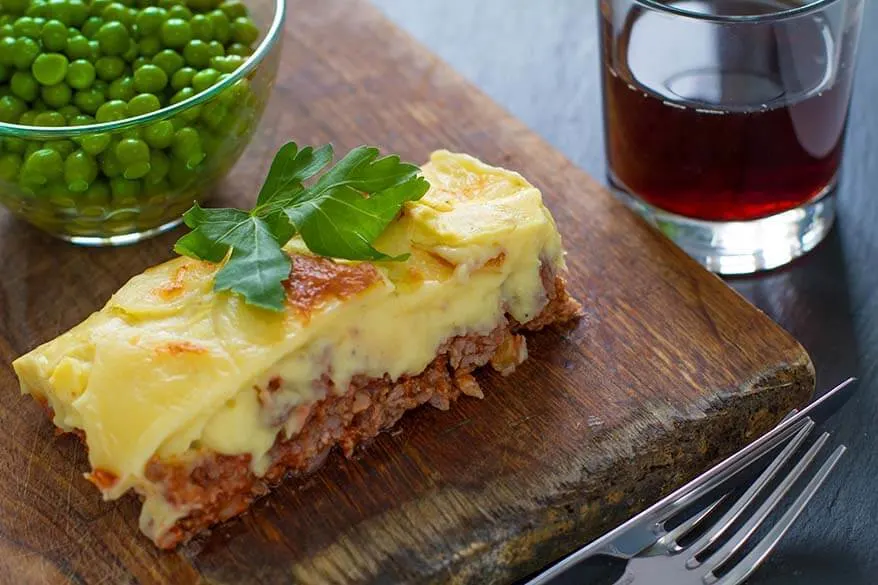
3. Steak and Kidney Pie / Pudding
Steak and Kidney Pie (or Steak and Kidney Pudding) is one of those typical British dishes that you just have to try!
The filling is composed of diced steak combined with chopped onion and kidney, usually from a pig or lamb. This mixture is cooked with brown gravy, then encased in pastry and baked. Or – in the case of steak and kidney pudding – steamed for several hours in a suet pastry. Occasionally mushrooms are added, along with some type of ale.
The kidneys lend a full, gamey flavor to the filling. It certainly tastes unique but is quite delicious. It’s usually accompanied by mashed potatoes, green beans, and lots of gravy.
Where to try it: Steak and kidney pie is widely served throughout the UK and is a classic pub favorite.
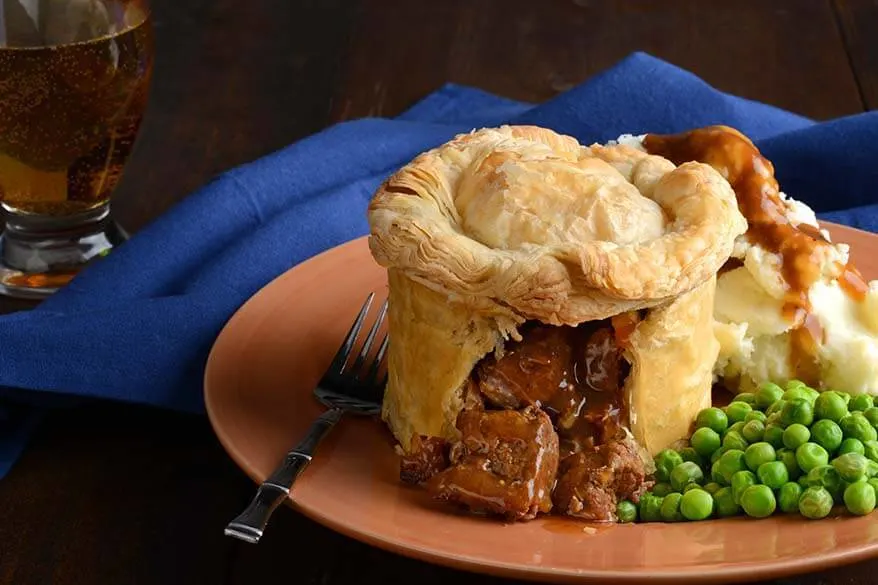
4. Haggis, Neeps & Tatties
Haggis is the national dish of Scotland and is traditionally served with mashed root vegetables – neeps (turnips) and tatties (potatoes). With a texture of a highly seasoned, crumbly sausage, haggis was traditionally made of a mixture of sheep offal (heart, liver, and lungs), minced with oats, onion, suet, salt and spices, then boiled in a sheep’s stomach.
The ingredients have changed somewhat over the years. These days, synthetic casings tend to be used instead of the sheep’s stomach. In addition, sometimes the offal will be from cows or even deer instead of sheep.
Nevertheless, this typical Scottish dish remains a firm favorite and you will find it served across Scotland. However, it’s truly a regional specialty and so you’ll rarely find haggis anywhere else in the UK.
Interesting to know: Haggis plays a big part in Burn’s night celebrations on January 25th, which commemorate Scottish poet Robert Burns. He raised the profile of the Scottish national dish across the world with his poem ‘Address to a Haggis’.
Where to try it: You can enjoy a good haggis meal in almost any Scottish pub. But for the best experience head to Edinburgh and dine at the White Hart Inn, the capital city’s oldest pub. Another great way to get to know more about traditional Scottish food and taste some of it is by joining a local food tour in Edinburgh!

5. Bangers and Mash
Another staple part of the British pub menu is Bangers and Mash. It is a hearty meal and comes covered in a rich onion gravy, with vegetables on the side. Traditionally a dish for the working classes, you can find gourmet versions made with specialty sausages and a mash made with other root vegetables like carrot or swede.
While the ‘mash’ part of the dish simply refers to mashed potatoes, the term ‘bangers’ might be a bit more elusive.
A banger is actually a British sausage. It doesn’t refer to any regional specialty but is a blanket term applied to all sausages produced in the UK. But why are they called bangers?
This term was supposedly coined during the First World War when the combination of the cheap ingredients used to fill the sausages and their tight skins caused them to explode in the pan! Strangely, though, no one calls sausages bangers at any other time – they are only bangers when served with mashed potato in this traditional British dish!
Where to try it: You can find Bangers & Mash in pubs and restaurants all over UK.

6. Yorkshire Pudding
Yorkshire Pudding is one of those traditional British foods that is not what foreigners expect it to be. It has nothing to do with sweet custard that the rest of the world calls ‘pudding’. Yorkshire pudding is a sort of savory pastry, made from a batter of eggs, flour, and water or milk. It’s usually served as a side dish.
These days, Yorkshire puddings are served alongside a Sunday roast (see further below), but that’s not how they started. Originally they were given as an appetizer, covered with gravy, in order to take the edge off the appetite of the diner whose main meal was too small to be satisfying!
When Yorkshire puddings were first served on the Sunday roast it would be to accompany the beef. These days, they tend to be included no matter what meat is cooked.
And whilst the batter is now divided into individual little puddings, originally it was cooked in one large tin and cut into squares.
Origin: You might be forgiven for thinking that Yorkshire puddings originated in Yorkshire, but this isn’t necessarily the case. Instead, they got their name from a 1747 cookery publication that called them ‘Yorkshire’ puddings to describe the light and airy batter made in that region, compared to the batter made in the rest of England.
Where to try it: Yorkshire puddings are served right across the UK. They are usually available wherever you find a Sunday roast, with the best (and biggest) to be found in traditional British pubs.
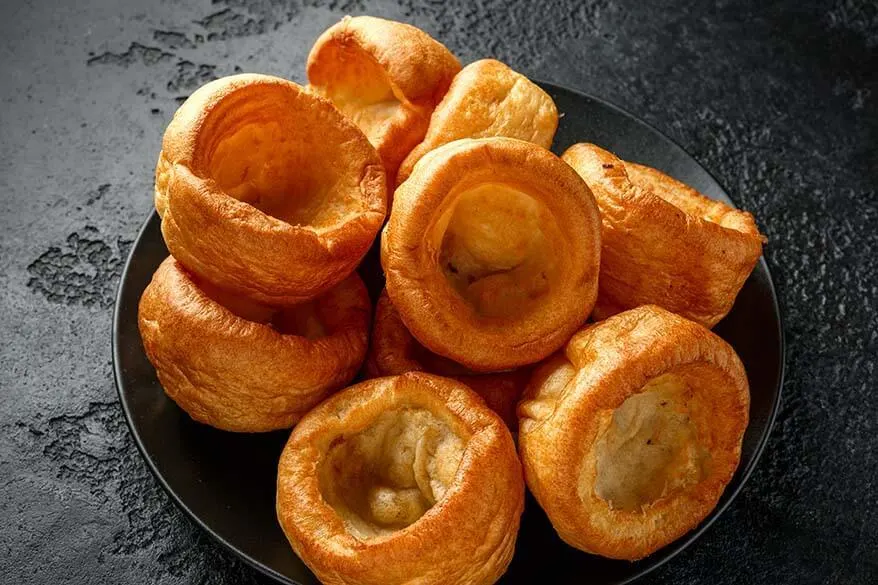
7. Sunday Roast
The Sunday Roast is a long-standing British institution and, to this day, one of the UK’s favorite meals. It is sometimes referred to as the ‘Sunday joint’ in reference to the roasted joint of meat that lies at the heart of the meal. In addition to the meat, it also contains roasted potatoes, stuffing, vegetables (typically cauliflower cheese, peas, and Brussels sprouts), and Yorkshire puddings.
This feast of a meal is then smothered in a rich gravy made from the juices of the meat, along with a sauce to accompany the specific meat used. Horseradish sauce accompanies beef, mustard goes for pork, mint sauce with lamb, and cranberry sauce with chicken.
The Sunday roast is a big part of family life in the United Kingdom and it is believed that its origins lie at the time of the Industrial Revolution. Families getting ready for the church would put a joint of meat in the oven to start cooking and would then add potatoes and vegetables as they left. On their return from church, the meal would be virtually ready.
Where to try it: You can enjoy a traditional roast dinner in most UK restaurants on Sundays. But for the very best experience head to a traditional British pub on a Sunday afternoon!
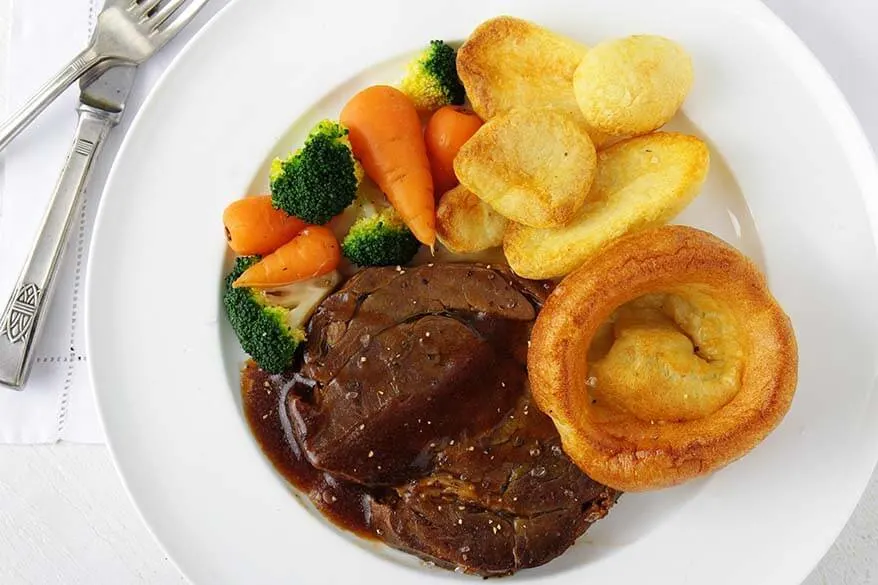
8. Full English Breakfast
There’s no better way to start your day in the UK than with a full English breakfast. The use of the word ‘full’ here is more than appropriate. This is a feast of a meal that will quite possibly keep you going right up until dinner time!
A ‘full English’ is also known as a fry-up because of the method used to cook the ingredients. It usually consists of bacon slices (called rashers), sausages, eggs (fried, poached, or scrambled), mushrooms, baked beans, fried or grilled tomatoes, black pudding, and fried bread. As if all of this isn’t enough to fill you up, it also comes with a side serving of hot buttered toast and a cup of British tea!
There are a few regional variations on the full English, with each nation of the UK adding its own twist. The ‘full Scottish’ will usually contain Tattie Scones (potato scones) and the square ‘Lorne sausage’. A ‘full Welsh’ may include laverbread along with locally sourced ingredients. A ‘full Irish’ is much more likely to contain white pudding than black (white pudding contains no blood, just pork, spices, and oatmeal).
Where to try it: A full English breakfast is served at just about every UK eatery. And the good news is that you’re not just limited to eating it in the mornings! Most British pubs offer an ‘all-day breakfast’ option so you can tuck into this wonderfully hearty meal whenever the fancy takes you!
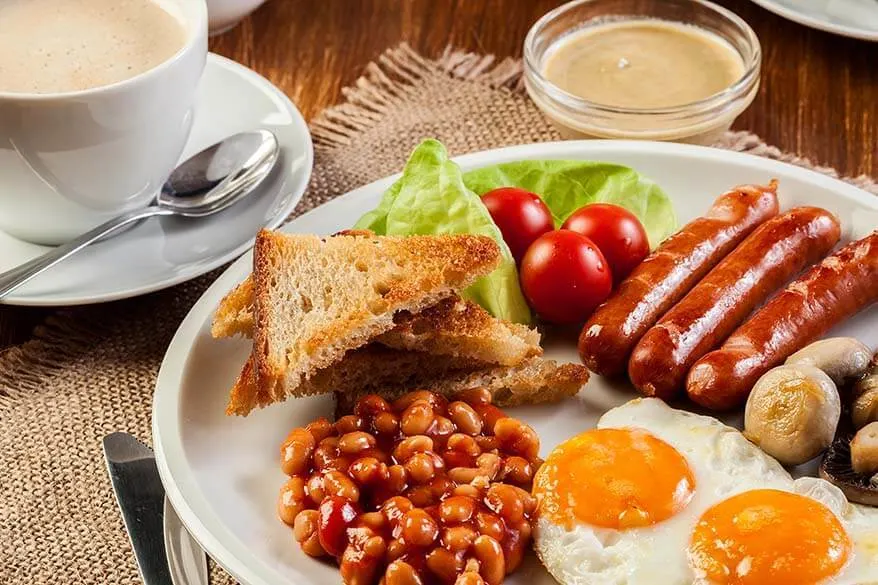
9. Black Pudding
Black pudding is a kind of sausage and deserves a separate mention among the most typical dishes in the UK. It’s a central part of the full English breakfast, particularly in the north of England where it is most popular.
Unlike other sausages, however, this one is made with blood combined with a filler like oatmeal, and cooked long enough for it to congeal. It is one of those dishes that some people like and others refuse to try. But it is actually quite a healthy alternative to regular sausages and tastes a lot better than it sounds!
Black pudding is actually an ancient food and there are references to it in Roman cooking literature as early as the 4th or 5th century AD. It has had a chequered history and has even been banned in the past. In some religious circles, eating this ‘blood sausage’ was considered to be very controversial.
Where to try it: You will find black pudding all over the UK. However, if you want to try it, I would recommend ordering the restaurant-quality version. Many cafes and hotel breakfasts serve lower quality black pudding that doesn’t give you a true idea of how tasty this dish can be!
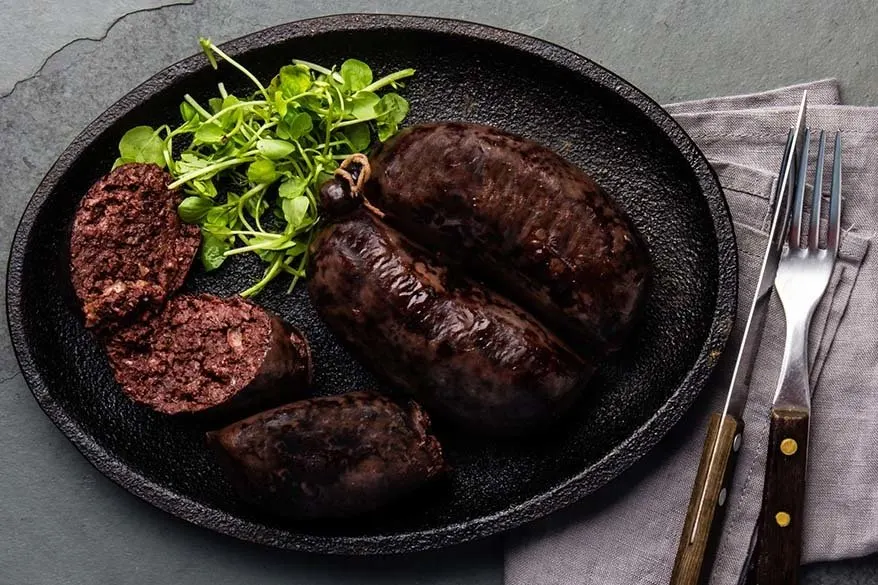
10. Cullen Skink
Its name may sound unappealing but Cullen Skink is a very delicious Scottish fish soup. It’s made from a mixture of smoked haddock, potatoes, and onions, along with milk or cream.
The dish originated in the fishing town of Cullen in Morayshire on Scotland’s northeast coast. There, it was made with Finnan haddie – a regional, cold-smoked haddock. Now enjoyed all over Scotland, it is typically made with any type of undyed haddock.
The origins of the ‘skink’ part of its name are a little unclear. Some say it comes from a Gaelic word for ‘essence’ and others say that the word refers to the scraps of beef that were originally used to make soup.
Where to try it: Cullen Skink is warm, hearty and the perfect food to enjoy in Scotland’s chilly climate, where you will find it served in almost every restaurant and bar. It is less common outside Scotland, but you will still sometimes see it on menus in other parts of the United Kingdom. If you do, I strongly recommend giving it a try!
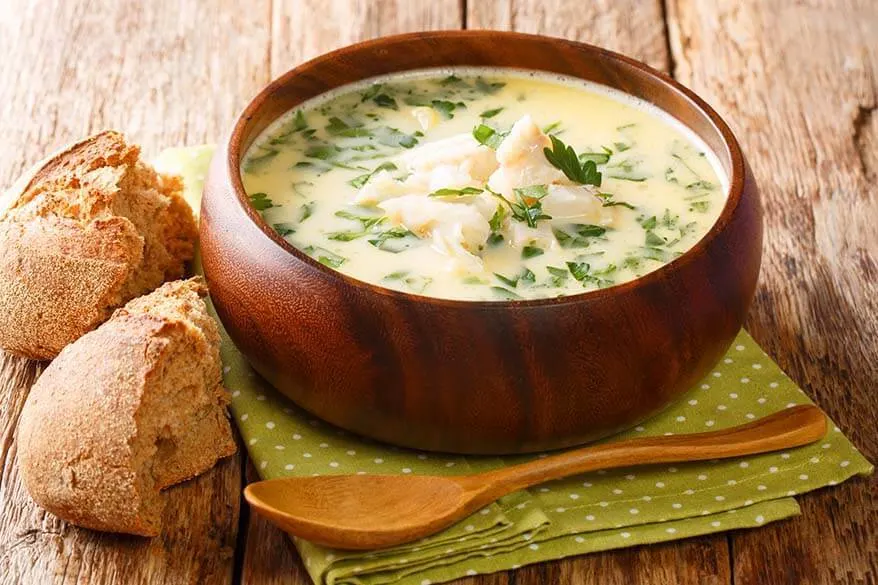

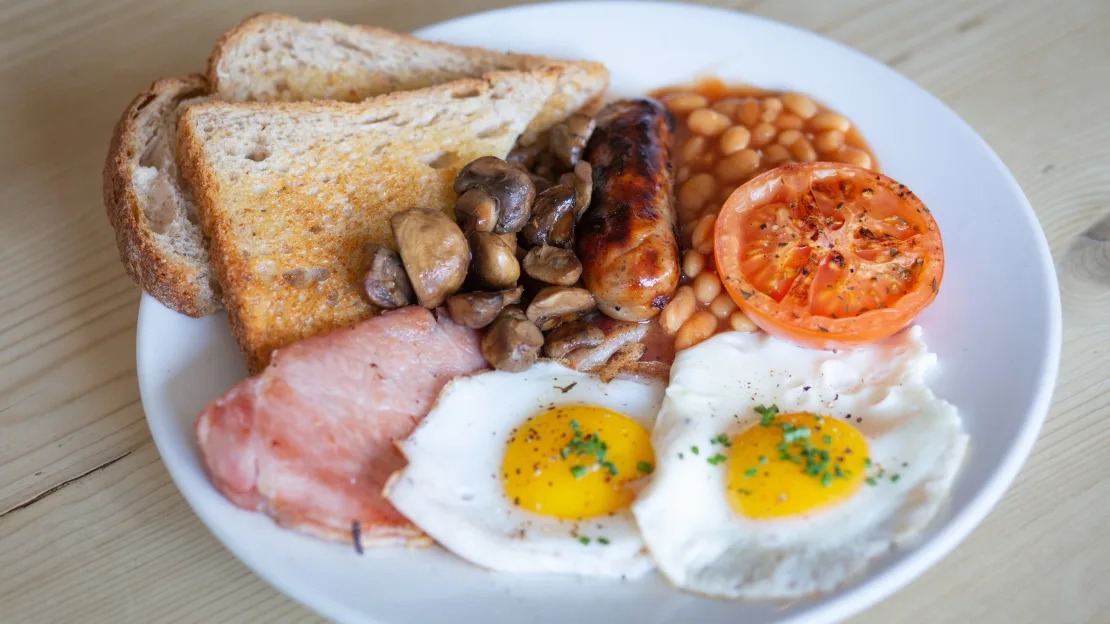

0 Comments